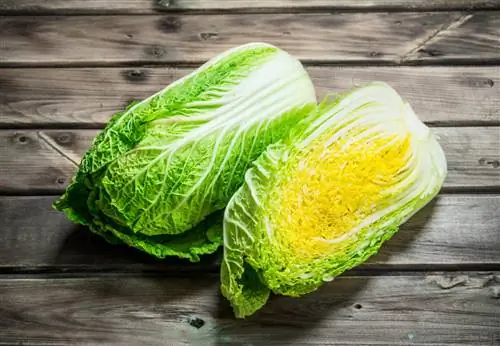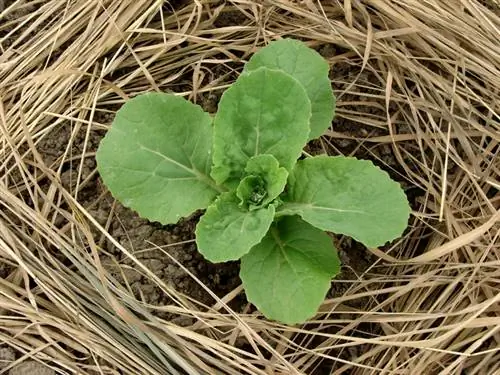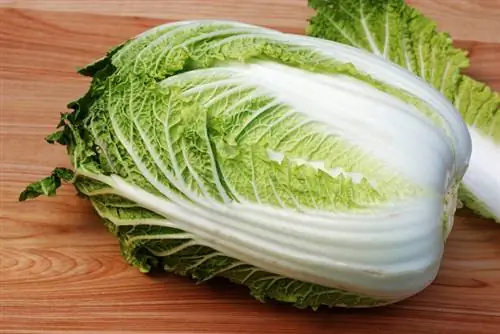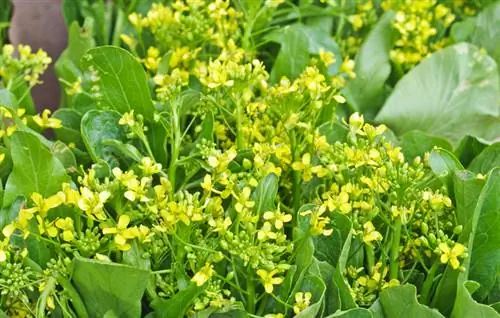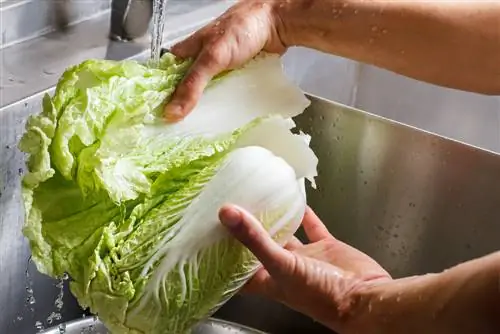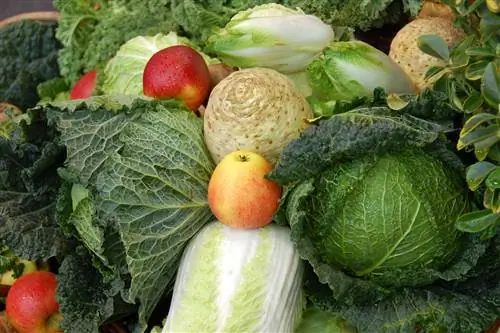- Author admin [email protected].
- Public 2024-01-05 20:48.
- Last modified 2025-01-23 11:22.
In supermarket displays and on the market, Chinese cabbage and white cabbage, which are also very popular in Germany, are often found close together. However, there are big differences between the two vegetables. We show how Chinese cabbage and white cabbage differ from each other.
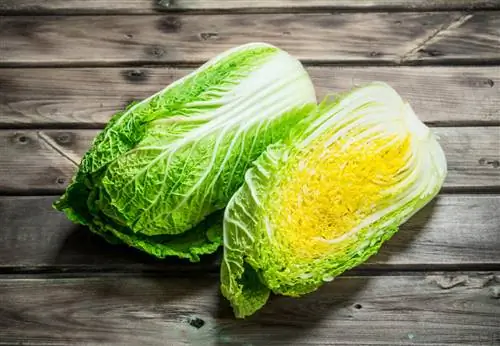
What is the difference between Chinese cabbage and white cabbage?
Chinese cabbage and white cabbage differ from each other bothtastewiseandvisuallyand cannot be confused with each other under any circumstances. In addition, compared to other types of cabbage, Chinese cabbage has no stalk and iseasier to digest
How can the difference in taste be described?
Chinese cabbage is significantly milderin taste than white cabbage. Withwhite cabbagethetypical cabbage tasteis much more pronounced - compare, for example, spicy kimchi made from Chinese cabbage with the hearty sauerkraut made from white cabbage. Due to its mild taste, many people find Chinese cabbage to be much more digestible and easier to digest than white cabbage. Compared to white cabbage, Chinese cabbage is not flatulent.
How do Chinese cabbage and white cabbage differ visually?
The two types of vegetables are very different in appearance, both in terms ofshapeandcolor.
Chinese cabbage
- Is elongated in shape
- Has white to delicate green, curled leaves (the outer leaves are often bright green), which can be tight or a little looser
- Has leaf veins similar to savoy cabbage
- Does not have a stem
White cabbage
- Is round shaped
- Has a firm head with tightly fitting leaves
- Is white to light green
- Has a thick, very firm stem
Can you use Chinese cabbage and white cabbage for the same recipe?
In principle,Chinese cabbage and white cabbagecan be exchanged for different recipesWhile Chinese cabbage is often eaten raw, for example in a mixed salad, white cabbage is usually boiled or braised or pickled. It has a significantly longer cooking time than the much more tender Chinese cabbage, which means the recipes have to be tailored accordingly. If you want, you can also eat white cabbage raw - it is a good alternative to Chinese cabbage.
What nutrients do Chinese cabbage and white cabbage contain?
Both Chinese cabbage and white cabbage are very he althy and containlots of vitamins and nutrientsChinese cabbage is even one of the he althiest foods in the world and trumps white cabbage in terms of ingredients. Both types of vegetables contain vitamins A, vitamins of the B group, vitamin C and vitamin K. When it comes to micronutrients, the list is even longer: magnesium, calcium, iron, potassium, sodium, phosphorus, selenium and zinc. All of these vitamins and nutrients take on important functions in the body regarding metabolism and the immune system.
Tip
Chinese cabbage is only distantly related to white cabbage
Although Chinese cabbage can be used similarly to white cabbage and pointed cabbage and they all belong to the same botanical family, the degrees of relationship are not very pronounced. Chinese cabbage is a cross between Pak Choi and turnip. But you don't necessarily have to be that strict when cooking and you can definitely swap the two types for each other.

